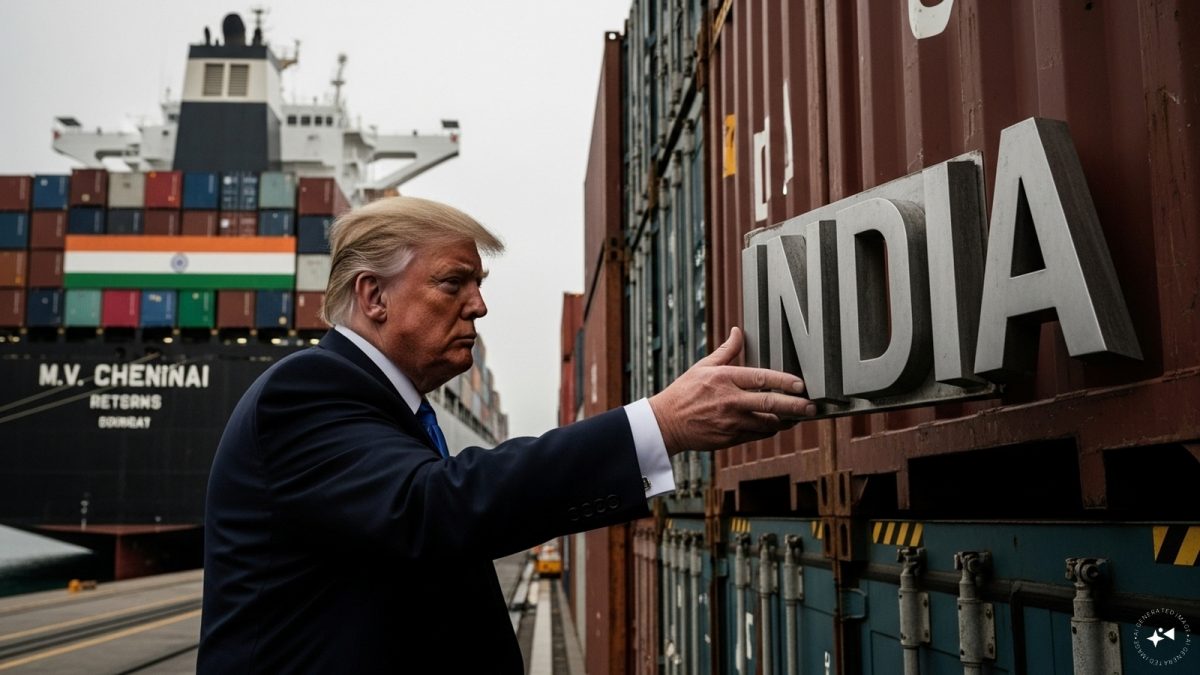US President Donald Trump’s abrupt imposition of a 25% tariff on all Indian imports and his brash “MAGA!” sign-off has raised sharp questions about America’s true intent: is this really about protecting US economic interests, or is Trump signalling to his political base just as much as he’s responding to India’s MEGA partnership push?
Heavy-handed tariff, personal diplomacy undone
Trump announcement to slap a sweeping 25% tariff on Indian imports beginning August 1, heaping on an additional “penalty” for New Delhi’s military and oil purchases from Russia. The move, which Trump justified by citing India’s “strenuous and obnoxious” trade barriers and non-tariff hurdles, stung especially after he started his announcement calling India “our friend”. Yet, what set this measure apart from similar tariffs on other nations was Trump’s conspicuous sign-off—MAGA (“Make America Great Again”)—at the very end of his decree, a slogan with loaded domestic political meaning.
Five months ago, Prime Minister Narendra Modi had projected his own vision during a state visit to the US: “In India, we are working towards a Viksit Bharat, which in the American context translates into Make India Great Again (MIGA),” he said, explicitly linking the two leaders’ slogans in hopes of forging a “MEGA partnership”. At the time, both leaders touted a “MEGA” partnership anchored in prosperity and trade expansion. The optics of that ambitious pitch are now in tatters.
Why the MAGA sign‑off?
While the new 25% US tariff is roughly in line with duties Trump has levied on other Asian exporters this year, the “penalty” for buying Russian arms and oil appears custom-tailored for India, further amplifying the sense of a bilateral rift. Analysts note this approach is in line with Trump’s long-standing grievance that India is a “tariff king” which keeps US goods out while flooding America with its own, echoing criticisms dating back to his first presidential term.
The agricultural and dairy sectors proved insurmountable sticking points: India’s reluctance to open its vast rural market to US subsidised produce remains politically non-negotiable, with over 700 million livelihoods at stake. This “red line” is partly why trade talks dragged on even as both leaders professed friendship and strategic cooperation.
Yet, the MAGA-centric post stood out because Trump had not concluded earlier tariff threats on countries like South Korea, the Philippines or Egypt, with the same US-first bluster. Indian commentators and US-watchers see a calculated message: Trump is playing to his domestic gallery, reaffirming that even so-called “friends” must ultimately yield to America’s interests, especially in the run-up to a tough election season.
There’s a deeper context: MAGA supporters had recently criticised Trump for being “soft” on India, especially after the appointment of a Chennai-born tech executive to head US AI policy and his earlier hints at easing immigration curbs for skilled Indian workers. With negotiations still underway and a new deadline looming, the move begs the question: is Trump responding to Modi’s MIGA vision, or merely performing for his electoral gallery?
Impact Shorts
More ShortsIndia stands firm
India’s government has indicated that it’s carefully reviewing the tariff implications while reaffirming its commitment to a “fair, balanced and mutually beneficial” trade agreement with the US.
Some experts believe the tariffs are part of a negotiation tactic dubbed the “TACO trade” — Trump Always Chickens Out, where threats escalate before backing off to secure deals under pressure.
As Trump signals potential flexibility, suggesting cuts to Indian tariffs in return for wider concessions, the interplay of slogans and substance continues to unfold. Whether MAGA was a strategic policy pivot or political posturing remains open to interpretation, just like the final outcome of the India–US trade standoff.


)

)
)
)
)
)
)
)
)



